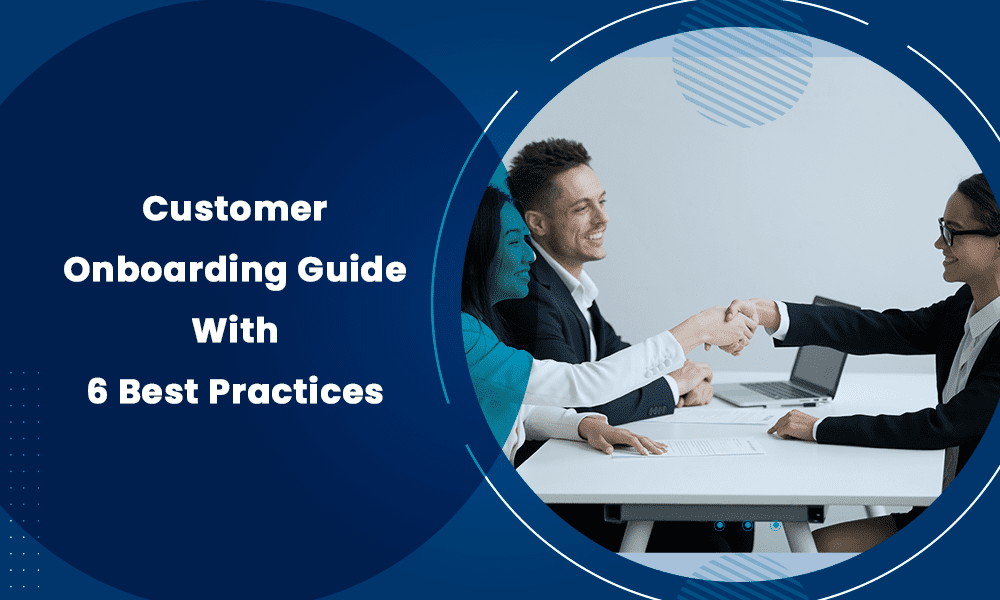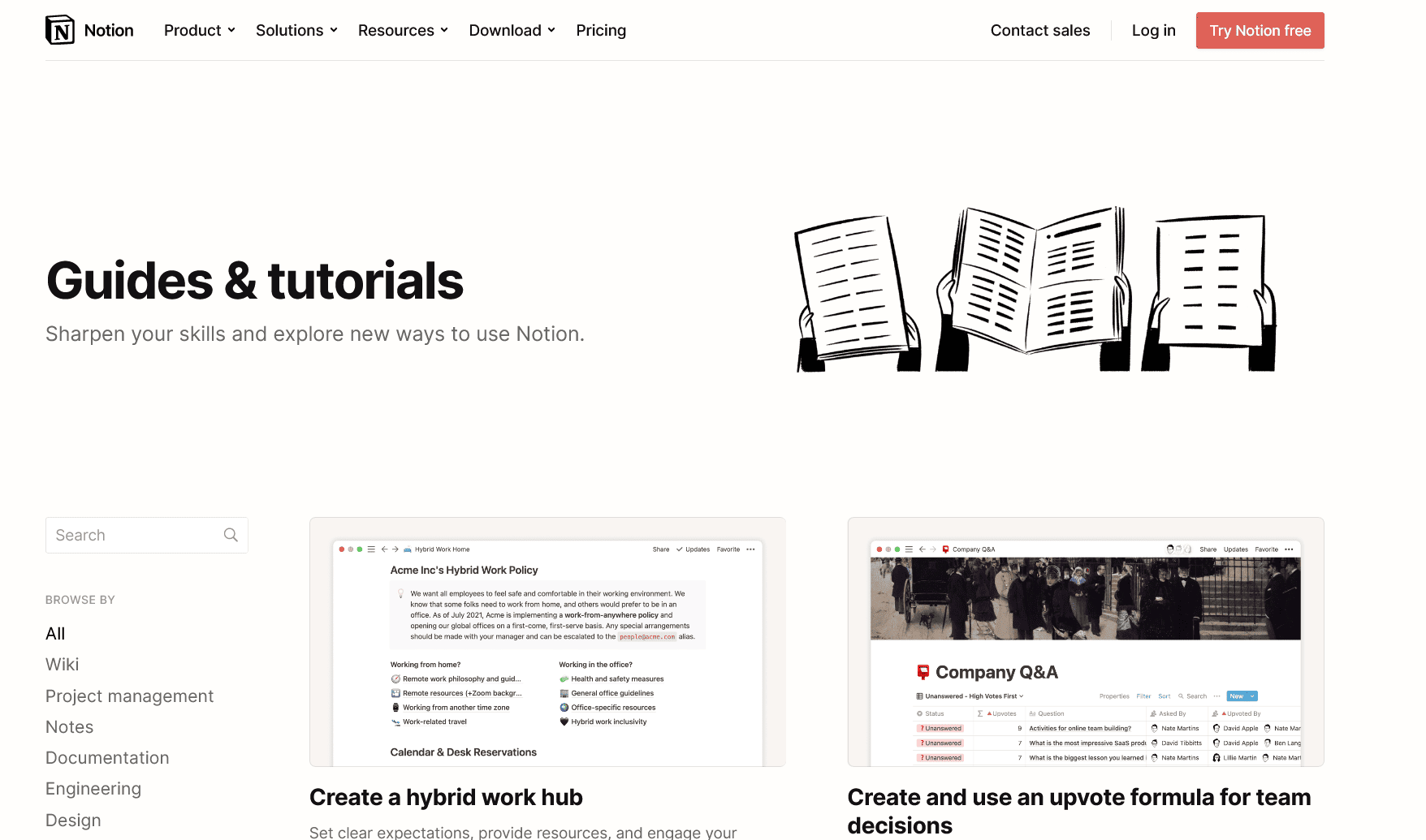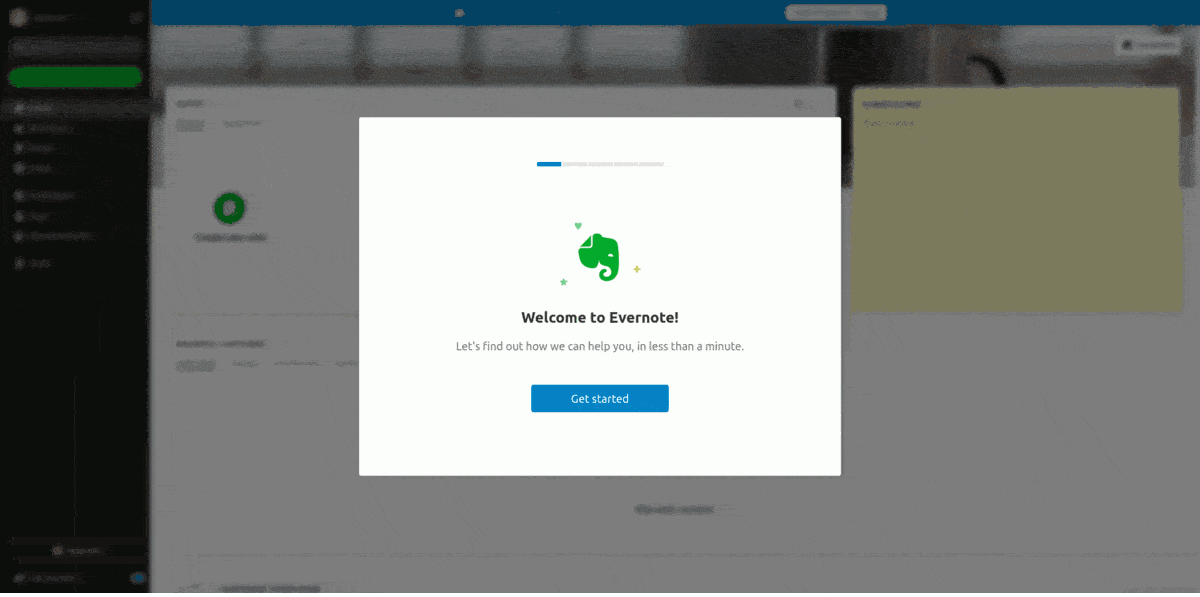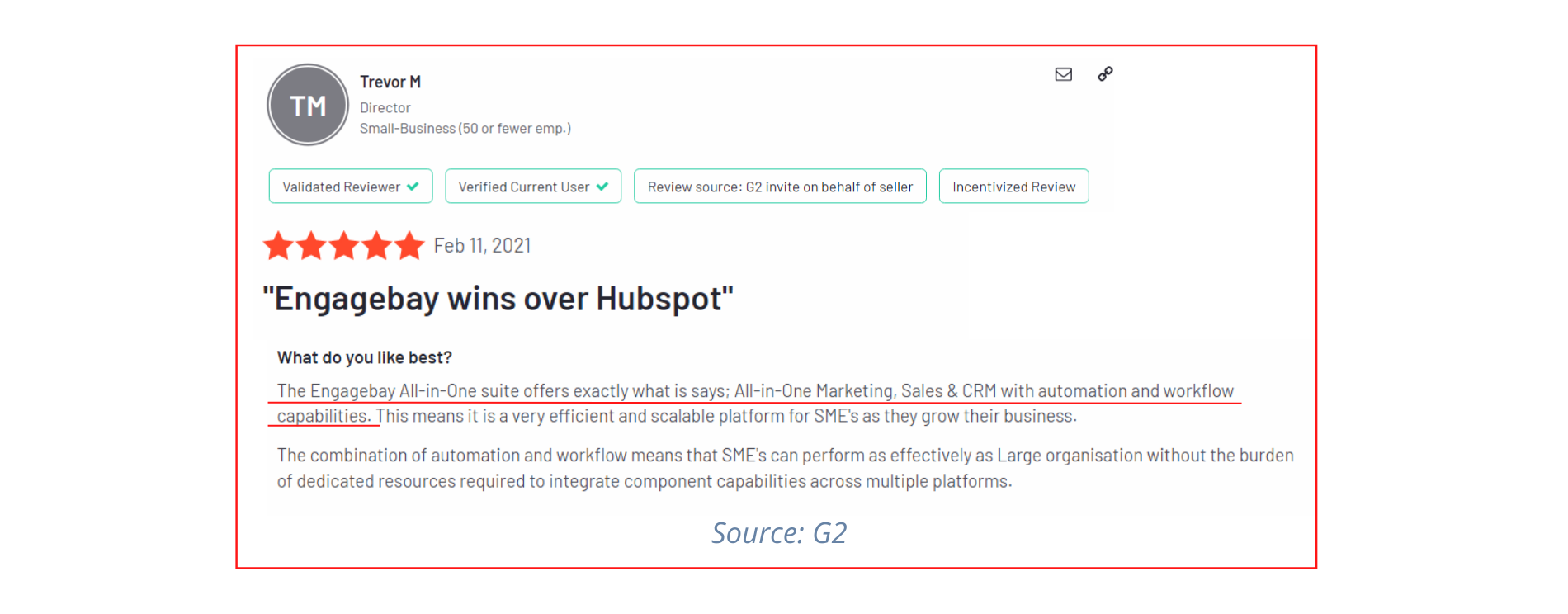So, you’ve got a . Congratulations! But what do you do next?
You might have set up a system of automated welcome emails or a tour and left the rest up to the . There’s a chance new users will abandon your because they didn’t feel compelled to explore it. To avoid that, companies must focus on perfecting the .
is the of welcoming new customers and helping them get acquainted with your business. It’s vital to because it helps your understand how they can best engage with your company.
In this guide article, we’ll discuss why is so important for building , what components and steps make up , and who all should be involved in the .
We’ll also show you a couple of wonderful examples to make sure you get the idea of right.
Read on!
Table of Contents
What is Customer Onboarding?
, or , is the of proactively guiding new customers through your to get them started and stay engaged. It is a series of steps and resources that make it easy for customers to incorporate a new into their routine.
You want your customers to feel like your is the solution to the problem they’re facing.
It’s fair to assume that they became a paying because they saw value in your service, so you have to justify that purchase. You want your customers to be familiar with the they’ve bought and understand how they can get the most out of it.
Since focuses on enhancing the and fostering relationships, it can be applied to any business model, including -based businesses.
The primary goal is to improve the lifetime value of your for the . Provide them with information and engagement that will help them derive from their purchases.
We’ll explore all that in detail in this blog. But before that, take a look at this video; it offers some insights and advice about the .
Why Is Important?
The most important thing, for any business, is to convince their new users that their service or is a valuable addition to a ’s life.
Once your customers realize that, the odds of them becoming lifelong increase exponentially. The realization — when something clicks for the — is what we call the ‘Aha!’ moment.
It’s what makes or breaks a . You want your customers to reach that moment but that only happens by carefully guiding them through the .
familiarizes the with your brand. It also sets expectations for your potential relationship with your clients.
The has a direct impact on your . If done well, you can increase your customer retention rate and also the overall .
A study revealed that most companies lose up to 75% of their new users within the first week. Furthermore, up to 60% of your free trial prospects never return to make a purchase.
To help customers through that initial awkwardness of trying out a new product or service, it helps that you build a that is action-oriented and -centric.
An action-oriented ensures that your customers engage more deeply with the .

It’s also better to learn by doing, so they are more likely to see the value of the if they become familiar with how to use it.
Here are a few more benefits of maintaining a strategic flow.
Make More Revenue
Acquiring a new can cost 5X more than retaining the existing ones. Besides, it takes double the effort to attract a than maintaining an old one.
Properly onboarded customers are more likely to stay and continue doing business with you and sustain your revenue stream.
Read also: Email Copywriting 101: Tips to Craft High-Converting Email Copy
Reduce Costs
Although the heart of is , it goes beyond delighting your customers.
A will ensure that your customers have a seamless transition from knowing your to using it. They are less likely to encounter issues in the early stage of adoption.
You don’t want your customers to feel frustrated and keep calling because their isn’t working the way they expected.
A strategic will help avoid complications for both users and reps.
It drastically reduces the overhead costs of the department while improving the overall efficiency, and improving .
Minimize the
Let’s say your business’s average cost of contract sign is $5,000. If just one leaves, you lose that much in annual recurring revenue.
But that’s not all. You also lose the opportunity to up-sell or cross-sell to that .
The Gartner Group studied that 80% of the company’s future income can come from 20% of the existing customers.
But it’s sad to see that B2B companies put only 20% of their marketing efforts towards .
Customers who go through a positive are more likely to stick around, becoming a valuable asset to your company.
Read also: SaaS Business Model Working Explained
Get Free Word of Mouth Branding
Word-of-mouth marketing can either make or break your business. It is about using to promote your business.
When your customers are happy with your or service and satisfied with your after-sales service, they are more likely to spread the good word about your company.
A positive equals a positive , which increases the chances of customers becoming brand evangelists.
Read also: The Customer-Centric Model – Your Definitive Guide
How Do You Onboard a New ? 6 Best Practices to Follow
Here is a checklist of seven best practices to consider.
i. Know Your Customers
You should know your buyer persona or profile in and out. This will give you a good understanding of your . Begin by collecting the necessary information from your .
Find out all about their pain points, unique struggles, and the challenges they are facing. An ideal way to obtain this customer data is with a questionnaire or a briefing document.
Don’t just focus on features — also pay attention to the outcomes that your audience is looking for with your .
This information will help you provide a .
ii. Clarify Expectations
Your should know what to expect before they purchase your .
While trying to sell them, lay out the qualifying factors for using the products. Having higher expectations than what you can offer will only leave them in disappointment.
Customers must be aware of things like how long tasks can take. Make sure that you are specific about the level of support you can provide.

iii. Show Them Value
While giving them a demo, you must have already shared the value your can offer. However, you need to again emphasize the value it will provide for their unique cases.
, at its fundamental level, is a learning ; show them how your or service will address their pain points and how they will benefit.
It’s always nice to have a personalized touch — include specialized training or offer documentation that will be valuable.
Read also: Perks & Examples of Customer Oriented Companies: Netflix, Slack & More
iv. Keep Communication Flowing
After you have familiarized them with your , make sure you remain in touch with them.
You can use email to send them guides and tutorials, software upgrades, and other relevant information.
v. Create -Centric Goals
Every ‘s needs are unique. Allow them to define their or goals, and help them create measurable milestones. A good example of this is Mailchimp’s .
Right after you sign up, Mailchimp asks you to fill out a questionnaire to better understand your goals and requirements. This helps Mailchimp tailor the tour to your needs and helps you understand the value of the .
Your only focus should be on creating a positive experience for your customers.
vi. Measure Your
The final step in customer onboarding best practices: measuring .
Identify friction points, track key metrics, measure , and gather feedback to get insights into what’s working for your business and where to improve — using an onboarding tool like EngageBay.
Who Should Be Involved in the ?
The for -based businesses should be an organization-wide effort. It isn’t the responsibility of just one department or team.
Let’s look at some of the stakeholders that can participate as a part of your workflow.
Management and Development
No one understands the complexity of your better than your developer and management team. They know the ins and outs of your platform and how they can be applied for specific use cases.
It’s a good customer onboarding strategy to involve them in the to gather feedback and make the even more intuitive and -friendly.
The responsibilities of a specialist include helping customers with the installation and configuration of the , minimizing time-to-value for users, and addressing the ‘s tech concerns.
supervises the management and . They are there to help find any weak link in the and help resolve issues at the earliest.
They are also responsible for providing feedback to the and to help them further enhance their performance.
Technical Support
If your product or service involves a lot of technical knowledge, this team can provide in-depth information and access to a knowledge base. Therefore, each member must be detail-oriented (pays attention, organized, prepared, etc.,) to address customers’ queries effectively effectively.
Nowadays, more and more customers are going the route. You want that to be as seamless as possible; the tech team’s support is invaluable in this case.
Read also: 16 Powerful Customer Retention Strategies to Stop Customer Churn
7 Components of Effective
The purpose of is to help customers feel acquainted with your or service. However, there is no single way of doing it.
It varies based on the specific need case of each . Here are some key components of new for as well as other business models.
1. Sign-up
The sign-up step is the initial contact that a has with your .
This is the stage at which you determine their goals and their requirements. If you ace this, then you’ve already made a good first impression.
Since this is the first touchpoint, you must perfect this because it’ll set the tone for the rest of the ’s experience.
You want your sign-up to be as intuitive as possible, so a simple sign-up form does the trick. Social sign-up buttons are also a good idea — they give you all the essential details, and they make it easy for the .
2. Welcome Email
Your welcome email is the first contact with the after they have signed up for your or service.
After the first login, this is the establishing point of contact between you and your . Since this is the first time you show up in their inbox, you need to use this opportunity to set communication expectations.
A few elements to include in your welcome emails:
- Don’t forget to thank them
- Don’t overload them with information — keep it simple
- Offer resource materials such as blog content or video tutorials for them to access
Here’s an example of a welcome email from DocSend.
The best part of this welcome email is the prominent call-to-action button, as well as, the step-by-step breakdown of the .
3. Tutorial
Once they have signed up, you need to create a guided tutorial to take them through the setup , step by step.
As part of the , guided tours and tutorials are there to support your users in the long run. Depending on the nature and complexity of your , you can offer:
- An in-app tour or walkthrough
- Tutorial options alongside different features
- A ‘getting started’ checklist to keep the on track
- You can easily create a digital business card where you can include links to the guides and tutorials
One point we’d like to make is that going through tutorials, ideally, should be the ‘s choice. This part of the onboarding process must be skippable — sometimes, a may be familiar with the or service.
Unskippable walkthroughs can be a barrier to them having a good .
Read also: The What’s What of Customer Experience Automation
4. Documentation
Documentation is the resource section where customers can try to find solutions to common issues themselves.
These materials allow them to troubleshoot their issue before they reach out to .
All the documentation also needs to be easily accessible and understandable. It also needs to be updated, especially after you release new features or tools.
Notion‘s and documentation are clean and visually appealing. Users can filter through different categories quite easily.
5. Follow-Ups
Ongoing communication is critical to keeping alive. It makes an onboarding feel valued.
The best thing about it is that you get an opportunity to personally understand where your customers are getting stuck. The human touch goes a long way towards establishing trust in your , especially during the client onboarding process.
You can get a ton of valuable feedback and, at the same time, help them get more value from your .
6. In-App Notifications
Notifications can play a crucial role in enhancing your ‘s overall .
Notifications are a vital contact point between you and your , with the potential to keep your customers engaged. It’s also a good way of reengaging with customers.
You can send push notifications to update them about the newly added feature or give small tips on making the best use of your . It’s also the simplest way to ensure that your brand has a good recall value in your ‘s minds.
7. Data Import
Many marketing automation tools need to integrate with other third-party applications to expand their functionalities.
In such cases, customers are required to import their data to be able to connect with other systems.
It helps to automate the as much as possible – you can autofill information, provide dummy data, or make it the first step towards using the .
Read more: Do You Know What All a Customer Journey Entails? Take a Look
3 of the Best Customer Onboarding Examples
Most tools will have customer onboarding built right into them. Some are bad, some of good, and some are outright phenomenal.
Here, we have three of the best customer onboarding examples to get you inspired.
1. Evernote
Evernote is a favorite notetaking app for millions of people worldwide. Check out how insanely easy it is to follow Evernote’s instructions:
2. Headspace
Who said onboarding can’t be in the form of a video?
That’s exactly what folks from Headspace, the medidation app, did.
Check it out:
Calm, soothing, and ofcourse, helpful, ain’t it?
3. Grammarly
Grammarly is known for its minimalistic design and user interface. This bleeds into their customer onboarding process as well.
Take a look at their product walkthrough:
Wrap Up
An exceptional focuses on the .
But the onboarding journey doesn’t end there.
best practices are constantly evolving. It’s a strategy that needs to be adapted and optimized consistently. As your company scales, so will your services. The workflow should reflect that.
Since an involves a lot of steps, it’s important to have a system in place that can take care of the routine tasks. With every new , there will be new emails to send and appointments to schedule.
Implementing a CRM software system (we recommend EngageBay!) can help automate a lot of the recurring tasks. You can automatically update leads, send timely notifications, respond to service requests, and do so much more.
Here’s Lauraine M’s take on EngageBay:
Many small business owners use and love EngageBay to automate their business process — here are a couple of reviews from happy customers:
Find out how you can too, or book a 30-minute demo with our experts.







Losing up to 75% of new users must be very disappointing, I have never seen such frustrating statistics before. Saying from my own experience, I have to tell you that customer retention and engagement had grown significantly as soon as I started using a chat bot and some unobtrusive pop ups from HelpCrunch. Following your advice, I will try to improve follow-ups and data import. Plus, I will combine them with the HelpCrunch features. Thanks a lot for the brilliant ideas.
Thanks, Cori.